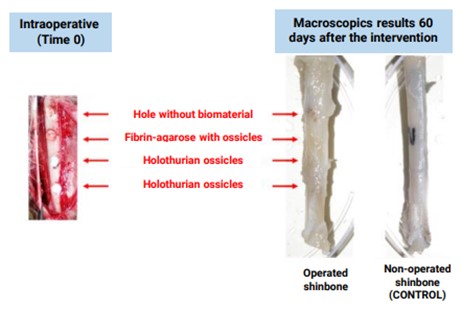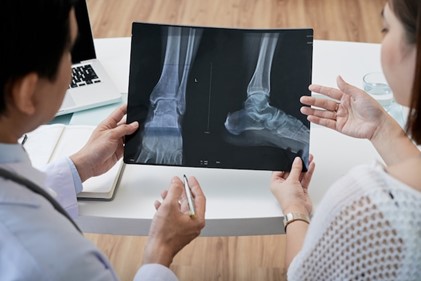Musculoskeletal conditions affect 1.7 billion people worldwide and are associated with pain and significantly limited mobility. Such conditions include fractures and lifelong disorders that result in bone injuries and, consequently, require partial or total restoration or substitution of the bone. Existing solutions are based on the use of grafts made from biomaterials with insufficient biocompatibility, deficient biocompatibility and in vivo functionality, and are mostly based on the use of animal bone or hydroxyapatite particles. Therefore, a challenge remains to find new optimal materials to be used in regenerative medicine.
Researchers at University of Granada (UGR) have developed a solution that incorporates echinoderm ossicles, preferably holothurian ossicles, for its use in biomedicine. This novel biomaterial allows bone restoration and enhances bone function used alone, as a part of a composite or combined with an artificial tissue.
The general composition of the proposed biomaterial consists of ossicles, and it is composed by Calcium carbonate mineralized as calcite and it may contain 5 – 13% magnesium carbonate in ionic substitution. The invention comprehends the use of echinoderm ossicles alone or as a part of a composite or an artificial tissue along with cells. Other compounds proposed by the researchers may include other components useful for medical purposes and tissue regeneration, such as fibrin and agarose or human mesenchymal cells, among others. The technology also comprises the in vitro method of extraction and preparation of the biomaterial.
Properties and benefits have been thoroughly tested with different ex vivo assays which confirmed its therapeutic feasibility. In vivo assays were performed in laboratory rabbits, demonstrating their biocompatibility and bone regeneration effects.
Benefits:
- Demonstrated applicability to treat severe bone injuries that require graft implants and to restore bone function in injured tissue.
- Elevated in vivo biocompatibility demonstrated in laboratory animals.
- The biomaterial can be combined with different types of biomaterials to generate a bioartificial tissue with improved properties.
- Potential use as a pharmaceutical vehicle for the administration of a therapeutic agent for pain control, infection prevention or growth enhancement.
- Provides better results in terms of bone regeneration at both the macroscopic and microscopic levels, thus allowing for the complete restoration of the bone in comparison to other existing biomaterials.

The represented institution is looking for a collaboration that leads to commercial exploitation of the presented invention.
Institution: Universidad de Granada.
TRL: 3-4
Protection status: Spanish Patent Application
Contact: Noelia Mas / noelia@viromii.com

